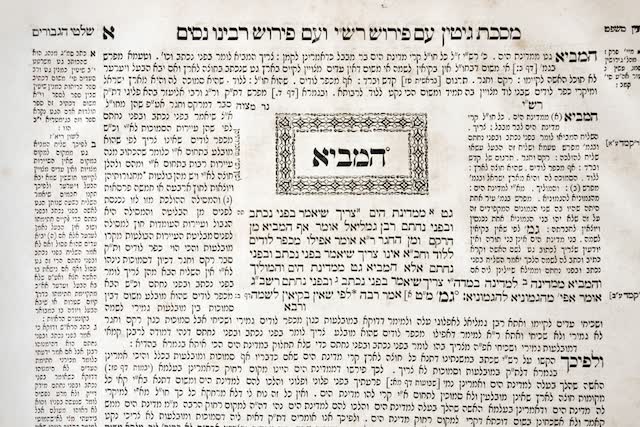 The Talmud is a compact, elliptical, but many-volumed collection of Jewish law and teachings. The achievement of Jews both in ancient Palestine and in Babylonia, the Talmud has come down to us in two basic editions. The Palestinian version, compiled around 400 A.D., is known as the Jerusalem Talmud or “Yerushalmi”, and, oddly enough, is not widely studied or even translated into English.
The Talmud is a compact, elliptical, but many-volumed collection of Jewish law and teachings. The achievement of Jews both in ancient Palestine and in Babylonia, the Talmud has come down to us in two basic editions. The Palestinian version, compiled around 400 A.D., is known as the Jerusalem Talmud or “Yerushalmi”, and, oddly enough, is not widely studied or even translated into English.The Babylonian edition known as the “Bavli”, was compiled around 500 A.D. and became the normative text in traditional Jewish education, especially in rabbinic training.
The core of the Talmud is the Mishnah, an early collection of laws and rulings compiled by Rabbi Judah the Prince around 200 A.D. The early teachers of the Mishnah were known astannaim. The Gemarah or commentary on the Mishnah, was produced by scholar-teachers known as amoraim who lived from 200–500 A.D. Together the Mishnah and Gemarahcomprise the Talmud. Modern editions of the Talmud also include later medieval commentaries printed in the margins.
This mass of documents is divided according to subject matter into six “orders”—for example, “Appointed Times” and “Damages”. The discussions can also be divided into narrative material (known as aggadah) and homiletical and legal interpretations of Scripture and Mishnah (known as halachah).
The Talmud is the major repository of Jewish learning to survive antiquity and until quite recently represented for Jews their definitive link with the Bible itself. Taken as a whole the Talmud can be thought of as the early Rabbis’ commentary on Scripture and an authoritative and inspired source of wisdom for all subsequent generations .
.
 .
.